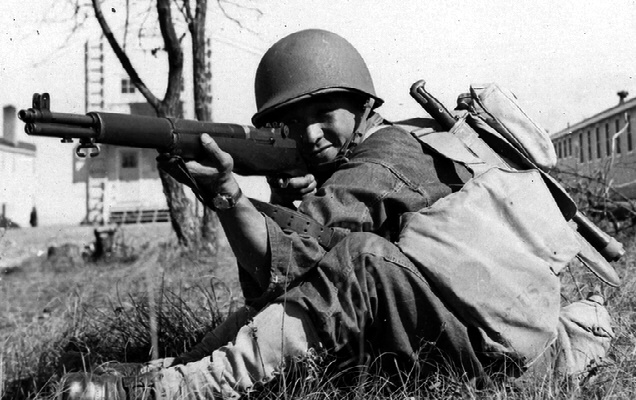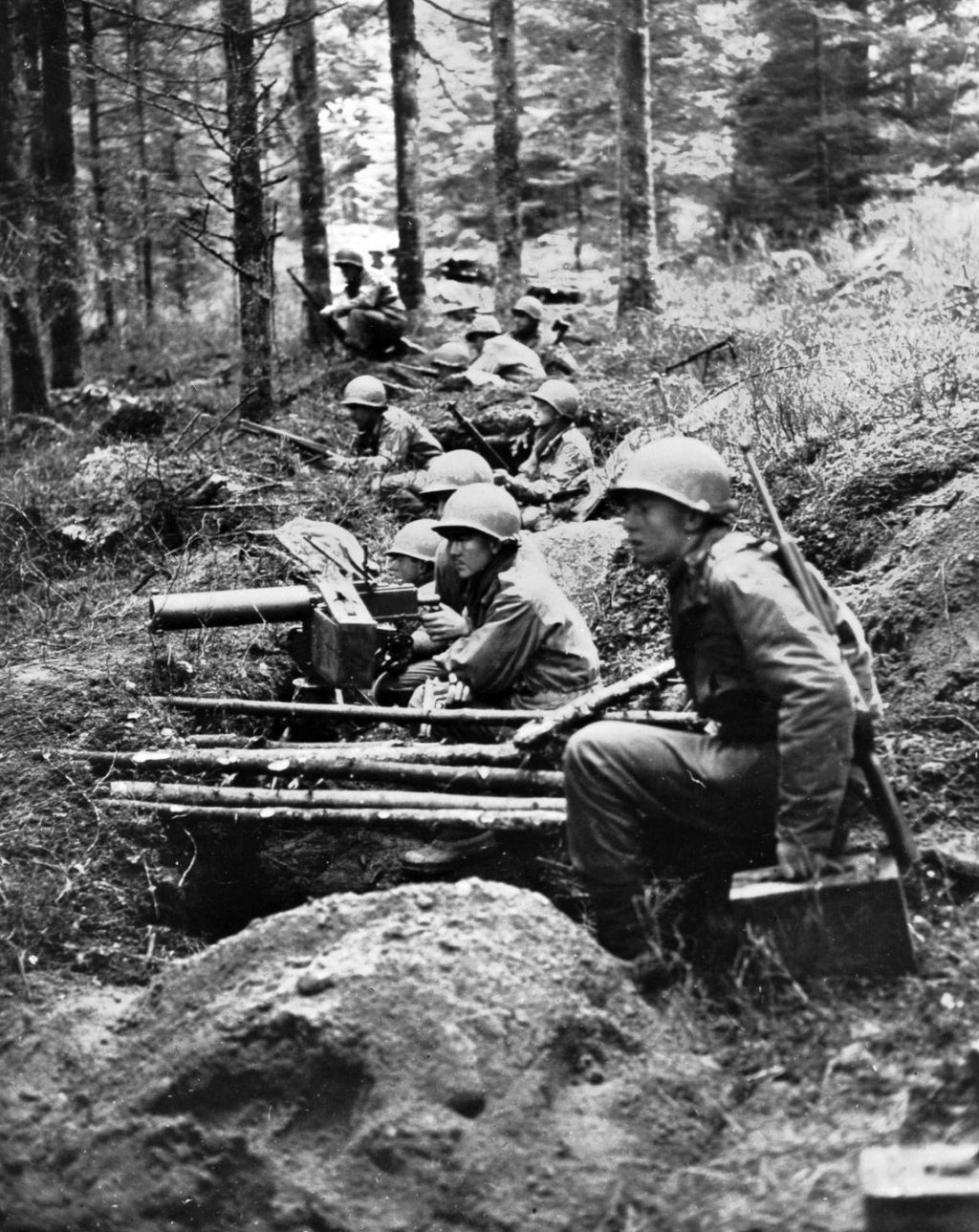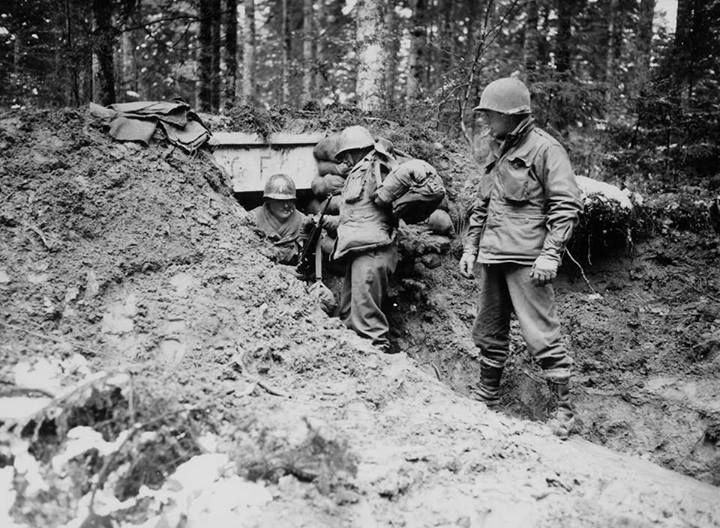The first action of the combined 100-B associated with the 442-RCT happened on June 26, 1944, at the battle of the Mount Belvedere. The regiment’s 2nd and 3rd Battalions led the attack but were soon pinned down. Before the 442-RCT’s first action became a rout, the veteran 100-B, initially tasked as the 34-ID reserve, took the lead from the less experienced 2nd and 3rd Battalions and captured the town with renewed vigor. As a tactical objective, Mount Belvedere had slowed the advance of the entire 34-ID. For this achievement, the Battalion was awarded its first Presidential Unit Citation.
The combat team continued in the Rome-Arno Campaign through September 1944, fighting at Hill 140, Leghorn, and across the Arno River. Detached from the 100/442-RCT on August 15, 1944, the AT Company glider-landed in southern France during Operation Dragoon, foreshadowing the later move of the entire regiment into southern France Theater.

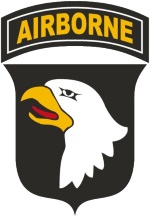 The 522-FAB was detached from the regiment to participate in the Central Europe Campaign, March to May 1945, where it was attached to no fewer than five divisions, including the 4th Infantry Division and the 101st Airborne Division, and helped liberate the camps at Dachau. The regiment’s final campaigns were back in Italy, in the Northern Apennines Campaign from September 1944 to April 1945 and in the Po Valley, April to May 1945, where, less the 522-FAB, it was attached to the 92nd Infantry Division and played a crucial part in capturing Mount Folgorito, Mount Belvedere, Pariana, Mount Pizzacuto, Bologna, and helped shatter the western defenses of the Gothic Line.
The 522-FAB was detached from the regiment to participate in the Central Europe Campaign, March to May 1945, where it was attached to no fewer than five divisions, including the 4th Infantry Division and the 101st Airborne Division, and helped liberate the camps at Dachau. The regiment’s final campaigns were back in Italy, in the Northern Apennines Campaign from September 1944 to April 1945 and in the Po Valley, April to May 1945, where, less the 522-FAB, it was attached to the 92nd Infantry Division and played a crucial part in capturing Mount Folgorito, Mount Belvedere, Pariana, Mount Pizzacuto, Bologna, and helped shatter the western defenses of the Gothic Line.
By the war’s end, the 100/442-RCT had fought in seven major campaigns in Italy and France and suffered over 9500 casualties, including 650 killed in action. It became the most highly decorated Army unit of its size, having earned seven Presidential Unit Citations, two Meritorious Unit Plaques, an Army Unit Commendation the equivalent of a DSC for the entire unit, and over 18.000 individual awards for valor, including 21 Medals of Honor; 52 Distinguished Service Crosses (DSC); 1 Distinguished Service Medal (DSM); 28 Oak Leaf Clusters to the Silver Star; 560 Silver Star Medals (SSM); 22 Legion of Merit Medals (LOM); 15 Soldier’s Medals (SM); 1500 Oak Leaf Clusters for the Bronze Star Medal; 4000 Bronze Star Medals (BSM); 12 (French) Croix de Guerre; 2 (French) Palms to the Croix de Guerre; 2 (Italian) Croce Al Merito Di Guerra; 2 (Italian) Medaglia Di Bronzo Al Valore Militaire; 1 Air Medal; 468 Oak Leaf Clusters to the Purple Heart and 9486 Purple Heart Medals (PH). These US Soldiers, the Nisei or Buddha’s heads or even often nicknamed One Puka Puka, received also 26 Army Commendations as well as 87 Division Commendations.
 Of the seven campaigns in which the 100/442-RCT participated, the most noteworthy was the Rhineland Campaign in France, while assigned to Lt Gen Alexander M. Patch’s Seventh Army.
Of the seven campaigns in which the 100/442-RCT participated, the most noteworthy was the Rhineland Campaign in France, while assigned to Lt Gen Alexander M. Patch’s Seventh Army.

 Of these seven months, the deadliest, most demanding month was October 1944, the first full month in theater, spent attached to Gen John E. Dahlquist’s 36-ID in the Vosges Mountains. This was the defining moment for the Japanese American 100/442-RCT. It was the culminating point, both militarily and figuratively, in the existence of the unit and when it was over, the unit required dedicated recovery and reconstitution.
Of these seven months, the deadliest, most demanding month was October 1944, the first full month in theater, spent attached to Gen John E. Dahlquist’s 36-ID in the Vosges Mountains. This was the defining moment for the Japanese American 100/442-RCT. It was the culminating point, both militarily and figuratively, in the existence of the unit and when it was over, the unit required dedicated recovery and reconstitution.
 By the end of the month, the regiment had earned three more Presidential Unit Citations; liberated Bruyères, Belmont, and Biffontaine; and rescued the Lost Battalion, but at a cost of over 800 casualties. Like most rescues, the rescue of the Lost Battalion itself was not a planned operation, but an unforeseen development in the base operation, the 7-A’s advance through France and the VI Corps’ drive on St Dié following the 7-A’s landing on the French Riviera on August 15, 1944. Operation Dragoon had Gen Truscott’s VI Corps race through southern France to seize the Belfort Gap near the French-German-Swiss border.
By the end of the month, the regiment had earned three more Presidential Unit Citations; liberated Bruyères, Belmont, and Biffontaine; and rescued the Lost Battalion, but at a cost of over 800 casualties. Like most rescues, the rescue of the Lost Battalion itself was not a planned operation, but an unforeseen development in the base operation, the 7-A’s advance through France and the VI Corps’ drive on St Dié following the 7-A’s landing on the French Riviera on August 15, 1944. Operation Dragoon had Gen Truscott’s VI Corps race through southern France to seize the Belfort Gap near the French-German-Swiss border.
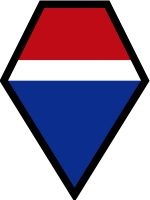
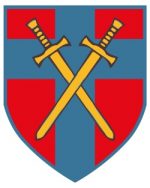 By September 19, the 7-A had reached the Moselle River but was then slowed, like, Bradley’s 12-AG and Montgomery’s 21-AG to the north, by severe supply shortages and also by stiffening German resistance as they approached the German frontier. On September 29, the 7-A issued new orders, changing the easterly direction of attack to a northeasterly one headed for Strasbourg. Before Strasbourg could be taken, however, the 7-A needed to breach the Vosges Mountains.
By September 19, the 7-A had reached the Moselle River but was then slowed, like, Bradley’s 12-AG and Montgomery’s 21-AG to the north, by severe supply shortages and also by stiffening German resistance as they approached the German frontier. On September 29, the 7-A issued new orders, changing the easterly direction of attack to a northeasterly one headed for Strasbourg. Before Strasbourg could be taken, however, the 7-A needed to breach the Vosges Mountains.
Severely restricted terrain and worsening weather aided the German’s defense. Where the 7-A had advanced over 350 miles from the riviera to the Moselle River in just under four weeks, advances in October were more accurately measured in yards. In the face of one Panzer, one Reserve, and four Infantry Divisions, the VI Corps needed to seize St Dié, the industrial center of the region, which controlled the mountain passes and straddled German defenses along the Meurthe River. To the 36-ID fell the task of seizing Bruyères, controlling one of the approaches to St Dié.
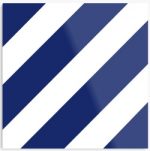 The 100/442-RCT arrived in France on September 30 and closed on the front lines by October 13. The regiment went into the line the following day and seized Bruyères on October 19 after bitter, often house-to-house, fighting. The 36-ID, with the 100/442-RCT attached, pressed on, in support of the 3-ID’s attack to seize St Dié. Biffontaine fell on October 23. Although on the line for only ten days, the stress was unrelenting due to the continuous combat, wet and frigid weather, and the steep, densely wooded hills, factors totally unfamiliar to the Nisei, who had just come from the relatively warmer, more hospitable climes of summer in southern Italy.
The 100/442-RCT arrived in France on September 30 and closed on the front lines by October 13. The regiment went into the line the following day and seized Bruyères on October 19 after bitter, often house-to-house, fighting. The 36-ID, with the 100/442-RCT attached, pressed on, in support of the 3-ID’s attack to seize St Dié. Biffontaine fell on October 23. Although on the line for only ten days, the stress was unrelenting due to the continuous combat, wet and frigid weather, and the steep, densely wooded hills, factors totally unfamiliar to the Nisei, who had just come from the relatively warmer, more hospitable climes of summer in southern Italy.
The 2/442, came off the line and moved into Belmont for rest and recovery on October 23, followed by the 100/442 and 3/442 a day later. The respite was short-lived for as the Nisei combat team came off the line, the 141-IR (36-ID) was beginning its attack that would lead to the encirclement and the rescue of its lead battalion.
Early on October 23, the 141/36, began to advance eastward from Belmont through the Forêt Domaniale du Champ de Fen to assault German positions near La Houssière. The regiment advanced in a column along the ridgeline almost seven kilometers long, but not even two kilometers wide, directly towards La Houssière. The 1/141, in the lead, advanced quickly, creating a salient and outdistancing itself from the rest of the regiment. Its Able and Baker Companies, as well as platoons from Charlie and Dog Companies, were soon cut off from the battalion headquarters as well as the rest of the regiment by elements of the German 16.Volksgrenadier-Division, the 716.Volksgrenadier-Division, the 933.Grenadier-Regiment, the 602.Schnellabteilung [Mobile Unit], the 201.Gebirgsjager-Bataillon, the 202.Gebirgsjager-Bataillon [Mountain], the 933.Infantry-Regiment (338. Infantry-Division), the 198.Fusilier-Battalion and the 285.Reserve-Battalion. The 1/141 attempted a breakout from the encirclement with no success. The Alamo Regiment’s 2nd and 3rd Battalions attempted to break through to their sister unit, also without success. The Lost Battalion’s 275 soldiers, 6000 meters behind enemy lines were now led by Lt Martin Higgins, voted into command by his peers in the perimeter.
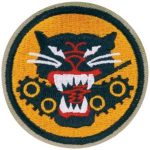 With fewer than two days of recovery following the battles at Bruyères and Biffontaine, the 100/442 was ordered to rescue the Lost Battalion. The 2/442, relieved the 3/141, early on the morning of Wednesday, October 25, and immediately engaged a German infantry company reinforced with machine guns, heavy mortars, and self-propelled guns. On the evening of October 26, the 100/442 and the 3/442 were ordered into operation for the next morning and both battalions moved out at 0400 with the maximum firepower available. The 3/442 with an attached medium tank company, Dog 752-TDB, and a company 4.2′ Chemical Mortars, Charlie 83-CWB, the 100/442 with Baker 752-TDB, Dog 83-CWB, and Charlie 636-TDB. The 422-RCT organic 522-FAB in support was reinforced by the 133-FAB.
With fewer than two days of recovery following the battles at Bruyères and Biffontaine, the 100/442 was ordered to rescue the Lost Battalion. The 2/442, relieved the 3/141, early on the morning of Wednesday, October 25, and immediately engaged a German infantry company reinforced with machine guns, heavy mortars, and self-propelled guns. On the evening of October 26, the 100/442 and the 3/442 were ordered into operation for the next morning and both battalions moved out at 0400 with the maximum firepower available. The 3/442 with an attached medium tank company, Dog 752-TDB, and a company 4.2′ Chemical Mortars, Charlie 83-CWB, the 100/442 with Baker 752-TDB, Dog 83-CWB, and Charlie 636-TDB. The 422-RCT organic 522-FAB in support was reinforced by the 133-FAB.
The fighting was fierce, progress slow, and casualties heavy. The dense woods and craggy rugged terrain of steep hills provided excellent cover and concealment for the German defenses which were centered around machine gun emplacements and company-sized reinforced roadblocks on the few ragged logging trails in the area. Artillery fired into the high trees caused tree bursts that increased their lethality as fragments rained downward. Additionally, weather significantly impacted operations as the rains, snow, and mud signaled the onset of the worst winter in the region in forty years. The Lost Battalion’s situation was grim. Forced to defend an area less than 350 by 300 meters in size, it had only one radio, no food, and little ammunition. Water, while obtainable, was from a muddy hole that was also used by the Germans.
Resupply was impossible over land. Instead, artillery shells and aircraft drop tanks were loaded with emergency D rations, radio batteries, and medical supplies in an effort to resupply the Lost Battalion. These efforts met with mixed success as the shells buried themselves deep into the French hillsides and the P-47s initially missed their drop zones inside the small perimeter. Patrols from the surrounding unit had no success in contacting outside units; one thirty-six-man patrol was destroyed and another fifty-three-man patrol returned to the perimeter with only five men. The 100/442 and 3/442 attacked abreast to the east without letup through the thick forests, battling the frigid weather, as well as snipers, roadblocks, machine-gun nests, air bursts, mines, and booby traps.
By Friday, October 27, the two battalions of the 442-RCT were on the line heading slowly for the Lost Battalion under heavy clouds and freezing rain while the 2/141 and the 3/141, as well as the sister 143-IR, balked and remained static. The 2/141, to the north, attacked Hill 617 to secure the flank of the main effort to the south. The narrow, restricted terrain at this point along the main ridgeline leading to the Lost Battalion forced the 100/442 and 3/442 to converge and allowed only enough room for two companies to advance abreast. The 100th swung right, down the ridge in an attempt to outflank the German defenses, while the 3/442 moved forward along the ridge.
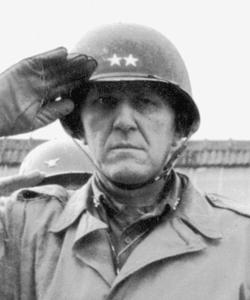 On Oct 28, after gaining 350 yards, it was stopped by another heavily defended roadblock, which required direct-fire tank support to reduce. As another freezing night fell, the 100/442 established defenses, unable to continue the attack in the pitch black of the deep forests. On Sunday, Oct 29, the Nisei renewed the attack. Gen Dahlquist continued to press the 100/442 to rescue the Lost Battalion at all costs. His presence at the 100th and the 442nd’s CPs throughout the crisis underscored the criticality of the situation.
On Oct 28, after gaining 350 yards, it was stopped by another heavily defended roadblock, which required direct-fire tank support to reduce. As another freezing night fell, the 100/442 established defenses, unable to continue the attack in the pitch black of the deep forests. On Sunday, Oct 29, the Nisei renewed the attack. Gen Dahlquist continued to press the 100/442 to rescue the Lost Battalion at all costs. His presence at the 100th and the 442nd’s CPs throughout the crisis underscored the criticality of the situation.
Not only was the momentum of the 36-ID slowed now that it was in the Vosges, but he was also in danger of losing one of his battalions. Finally, overcome with anger and frustration, the Nisei of the 3/442, spontaneously fixed bayonets and in a classic bayonet charge which, together with a heavy artillery barrage, broke the German defenses of the 933.Infantry-Regiment (338.Infantry Division) and the 198.Fusilier-Battalion.
Early on October 30, the 211 survivors of the 1/141 were relieved. The cost was high. The 100/442 arrived in France on October 12 with 193 officers and 3313 men. By the end of the rescue on October 31, it had suffered over 800 casualties in two weeks of action through the seizure of Bruyeres and Biffontaine, then the rescue of the Lost Battalion, including 117 killed in action, 639 wounded in action, 40 missing in action, and 18 injured. In contrast, the 36-ID started October with 730 officers and 12.785 soldiers and battle casualties for the division for the same month numbered 1785, including 218 killed in action, 1432 wounded, 154 missing, and 38 died of wounds. Most companies, usually about 200 strong, were down to between forty and fifty men. Still, following the rescue of the Lost Battalion, the 100/442 was directed to continue the attack. Finally pulled from the line on November 8 and 9, the regiment was at less than half strength.
 Senator, then – Lt Daniel K. Inouye best describes their situation following the rescue of the Lost Battalion:
Senator, then – Lt Daniel K. Inouye best describes their situation following the rescue of the Lost Battalion:
when Gen Dahlquist called the regiment out for a retreat parade to commend us personally, he is reported to have said to the Commander Officer: Colonel, I asked that your entire regiment be present for this occasion. Where are the rest of your men? Col Charles W. Pence, as bone-weary as any dog face in the outfit, replied, Sir, you are looking at the entire regiment. Except for two men on guard duty at each company, this is all that is left of the 442-RCT. And there we were, cooks, medics, band, and a handful of riflemen, a ragged lot at rigid attention, without a single company at even half its normal strength. One had only 17 men and was commanded by a staff sergeant. My outfit, Easy Co, with a normal complement of 197 men, had exactly 40 soldiers able to march to the parade ground. Gen Dahlquist looked at us for a long time. Twice he started to speak and choked on the overpowering feelings that took hold of him. And in the end, all he could manage was emotional: Thank you, men. Thank you from the bottom of my heart. And the saddest retreat parade in the history of the 442nd Regimental Combat Team was over.
By mid-November, the combat team was reassigned to what would later be called the Champagne Campaign in and around Nice and the French Riviera. For four months replacements filled in and the wounded returned to duty, while the regiment patrolled the Alps and took advantage of the recreational opportunities offered by the region before heading back to Italy and the 5-A.
Significance
By the beginning of World War II, Americans of Japanese Ancestry could look back to the arrival of the Gannen Mono in Hawaii in 1868 upon a history that spanned over seventy years. At first hardly intertwined with American life, the contract laborers brought their customs to America whole and intact, fully expecting to return to their homeland. But as their prospects of returning to Japan faded, they quickly assimilated into American culture blending their strong family ties and feelings of obligation – on – with the American concepts of freedom and equality. This produced a uniquely Japanese American Culture that, regardless of geographical origin, bonded the Nisei together when anti-Japanese hysteria turned the country against them and instilled in them the drive and perseverance to face adversity.
The 100th Infantry Battalion (Separate), composed first of Nisei in uniform, paved the way for the formation of the all-volunteer 442-RCT and preceded them into combat as part of Lt Gen Mark W. Clark’s Fifth Army in Italy. The cohesion and dedication of the unit shined through as the Nisei battalion proved itself in the Italian Campaign.
The 442-RCT continued the exemplary record upon entering the theater, again showing the dedication and esprit of the Nisei soldiers. Thus, when the 100/442 was committed in the Vosges Mountains of France in the rescue of the Lost Battalion during the fall of 1944, Maj Gen John E. Dahlquist had at his disposal a well-trained, battle-seasoned, supremely cohesive unit that, quite literally, would not quit. It was employed rescuing a surrounded battalion, the result of an operation gone awry, in the face of determined enemy resistance defending in difficult, unforgiving terrain and harsh weather. Actions by the division and the regiment, its leaders, and their men illustrate both good and bad examples of leadership and command during World War II, what today is termed battle command.
Visualize
Therefore I say: Know the enemy, know yourself; your victory will never be endangered. Know the ground, know the weather; your victory then will be total. (Sun Tzu, The Art of War) The first requirement of successful battle command is visualization. In the context of military operations, visualization encompasses seeing, understanding, and, most importantly, appreciating the situation surrounding the mission. It involves determining the mission, end state, and tasks to be accomplished. It requires an accurate assessment of the enemy forces and capabilities involved, as well as an appreciation of the restrictions and limitations created by the terrain and weather in the region. It demands a frank and honest assessment of the capabilities and limitations of the friendly troops and forces available. It necessitates a realistic estimation and expectation of what can be done in the available time.
Visualization also requires that civil factors that affect and shape the operation be addressed to minimize the impact upon the local area and inhabitants. Once the situation and end state are understood and appreciated, battle command visualization employs the elements of operational design to design and develop a plan that achieves the desired end state. The envisaged plan addresses decisive points and objectives. Actions are arranged simultaneously, sequentially, or both, with the limitations of operational reach buttressed by realistic limits of advance. If necessary, operational pauses are planned to prevent culmination. During the rescue of the Lost Battalion, visualization was haphazard and often less than thorough from the division down to the battalion level. This was primarily due to the unplanned nature of the operation, but also due to the command styles of the key leaders. This, in turn, made an arduous mission more difficult and increased the challenges encountered by the Nisei regiment in their operations in the forests of the French Vosges Mountains.










